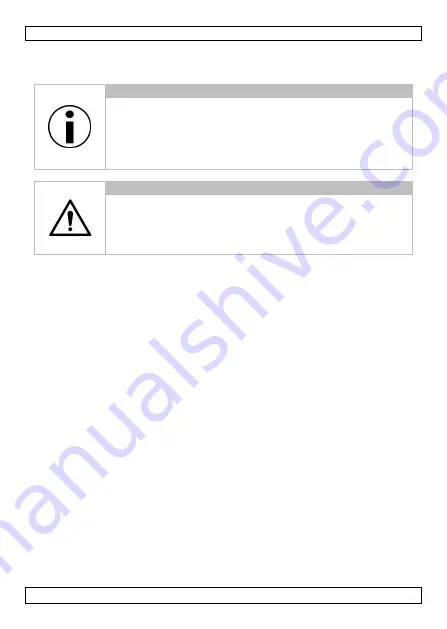
WS8818
V. 01 – 07/07/2017
5
©Velleman nv
5.
Operation
5.1
Powering and Installation
REMARK
The weather station will enter data reception mode as
soon as the batteries have been inserted. Therefore, we
recommend placing the batteries in the thermo-
hygrometer first. Then, power the receiver console within
5 seconds time to optimize data transmission and
reception.
WARNING
Do not puncture batteries or throw them in fire as they
may explode. Do not attempt to recharge non-
rechargeable batteries (alkaline). Dispose of batteries in
accordance with local regulations. Keep batteries away
from children.
Power both the thermo-hygrometer and receiver console.
Install the remote thermo-hygrometer at a distance of 5 to 10 meters away
from the receiver console. We recommend installing the thermo-hygrometer
in a vertical position on a shaded north-facing wall, at the same height as or
above the receiver console.
Wireless communication is susceptible to interference, distance, walls and
metal barriers.
Electro-Magnetic Interference (EMI)
Keep the thermo-hygrometer away from monitors, computers, etc.
Radio Frequency Interference (RFI)
Keep the thermo-hygrometer away from other devices using the
433 MHz frequency.
Line of Sight
The thermo-hygrometer has a range of 100 m (no interference,
barriers or walls). Considering all obstacles, the range will be about
30 m.
Metal Barriers
Radio waves will not pass through metal such as aluminium. Consider
all metal barriers when installing the sensors.
5.2
DCF-Signal Reception
Once both the thermo-hygrometer and receiver console powered, allow the
signal to stabilize for about 30 minutes. If the signal reception is not
successful, the system will automatically resume every two hours until the
signal is captured.






































